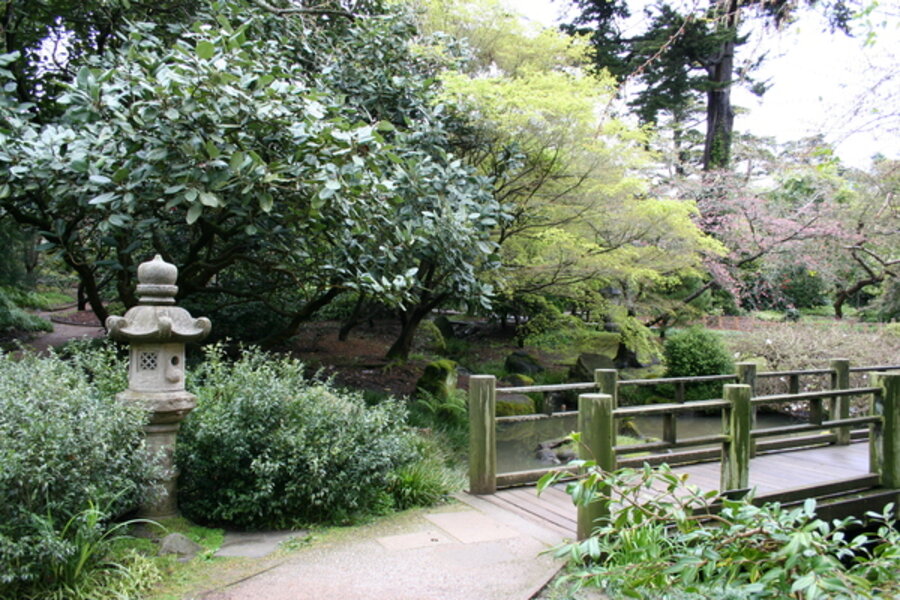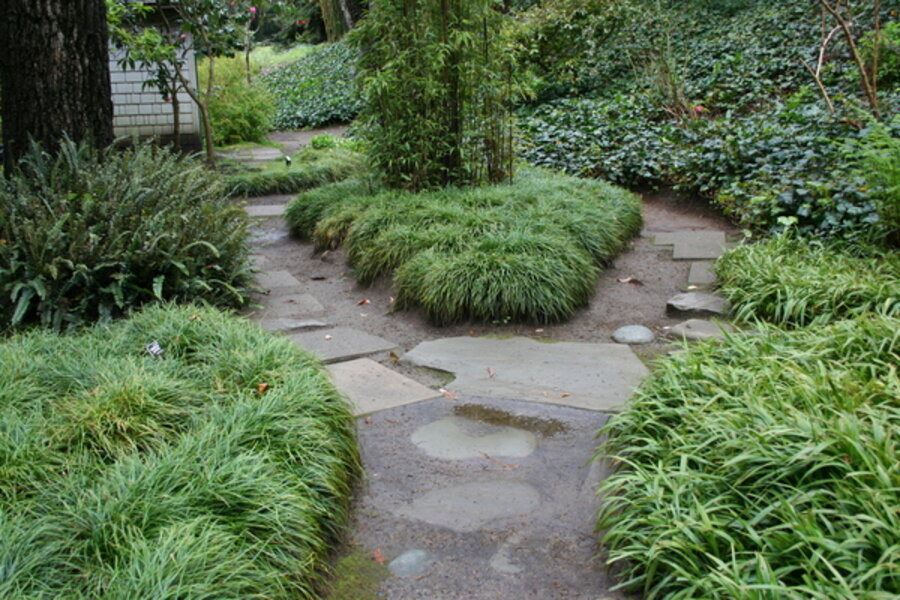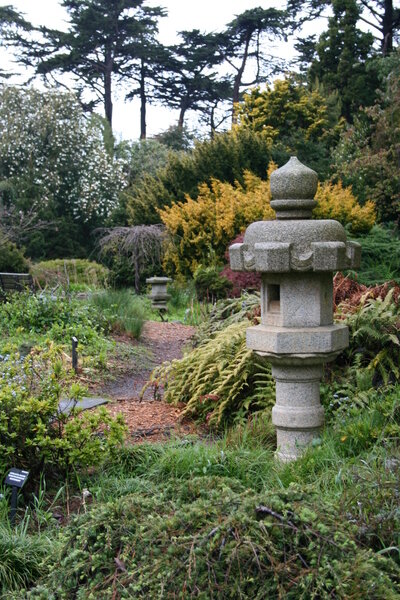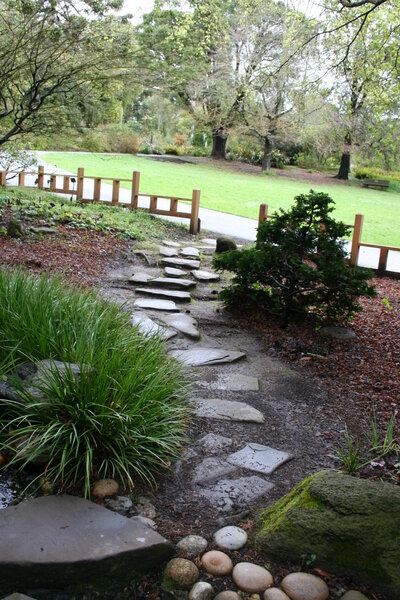Tips for Japanese garden design
Loading...
Even in spring, when many plants haven’t yet come out of winter dormancy, the Japanese and Asian sections at the San Francisco Botanical Garden shine brightly. Perhaps it’s because so much of the appeal of the Japanese design style is in its careful layout and use of hardscape.
Japanese garden design also makes use of evergreen plants that have a strong form, year-round foliage color, or textural contrast. What else makes a Japanese garden special? Read on for some hints gleaned from the San Francisco Botanical Garden (located at the corner of 9th Avenue and Lincoln Way in Golden Gate Park).
Ground covers
The use of ground-covering plants is a traditional element in Japanese garden design. Mosses are often used, but ground-covering plants can have a similar effect, of creating a contrast between the form of a tree or shrub and the subtle undulations of the ground. The San Francisco Botanical Garden has many shaded areas where mosses have been successfully established, but you'll also see mondo grass and other ground covers. [See second photo above; click on arrow at right base of first photo to go to the next one.]
The benefit of ground-covering plants instead of mosses is that most ground covers have a little more height and vigor to them, so can better out-compete weeds in the landscape
Use of stone
In any garden, stone provides an instant feeling of maturity and timelessness. Jagged stone creates drama, while smooth cobbles evoke the same calming feeling that water in the landscape brings.
Stone is regularly used to create pathways because the smoothness and size of the stones can determine how fast people walk the path. In a meditative area of the garden, a pathway should have fewer or smaller stones that take more concentration to navigate, while on a more highly traveled path the stone would be larger and smoother to allow a faster pace.
However, paths to a home would often have a zigzag shape, as it is thought that a circuitous pathway deters malevolent spirits. [See second photo at left.]
My favorite element of stone in the Japanese garden is the use of stone carvings and structures. A hand-carved granite bowl or lantern never fails to make me marvel at the perseverance of the human spirit. In our impatient modern lives, to imagine an artisan taking days or weeks to slowly chip away at a hunk of stone and unveil the art beneath is to remember the vital importance of beauty in our lives.
Water and ponds
In the Japanese garden, water is a symbol of renewal, calm, and continuity between life and afterlife. There is something primal in our nature that responds to the sight and sound of water, and I think that no garden, Japanese or otherwise, is fully complete without it. [See first photo above.]
In a Japanese pond, two stones may be placed to signify the turtle and the crane, symbols of long life and good health. Read more about the symbolism of water by clicking here.
Native plants and materials
In the botanical garden, of course, horticulturists are re-creating a display from another region to enlighten and inform. Yet one of the integral design aspects of a Japanese garden is in the use of plants and materials local or native to the region. A Japanese garden is rooted in a sense of place. It makes use of the views from over the garden fence (called “borrowed scenery”), and integrates the stone, wood, and plants found on the site or in the region so the garden feels at one with the surroundings. [See first photo at left.]
That’s not to say it isn’t carefully designed. A garden is at its best when it reflects some of the themes found in nature, yet elevates and interprets those themes into an artful expression of human interaction with the land.
Click here to read my eight do's and don'ts for designing an Asian garden.
-----
Genevieve Schmidt is a landscape designer and garden writer in the redwoods of Northern California. She shares her professional tips for gardening in the Pacific Northwest at North Coast Gardening, and on Twitter. To read more of what she has written here at Diggin' It, click here.










